5G speed: 5G vs. 4G performance compared
5G is faster than 4G, but how much faster depends on which carrier's network you're on
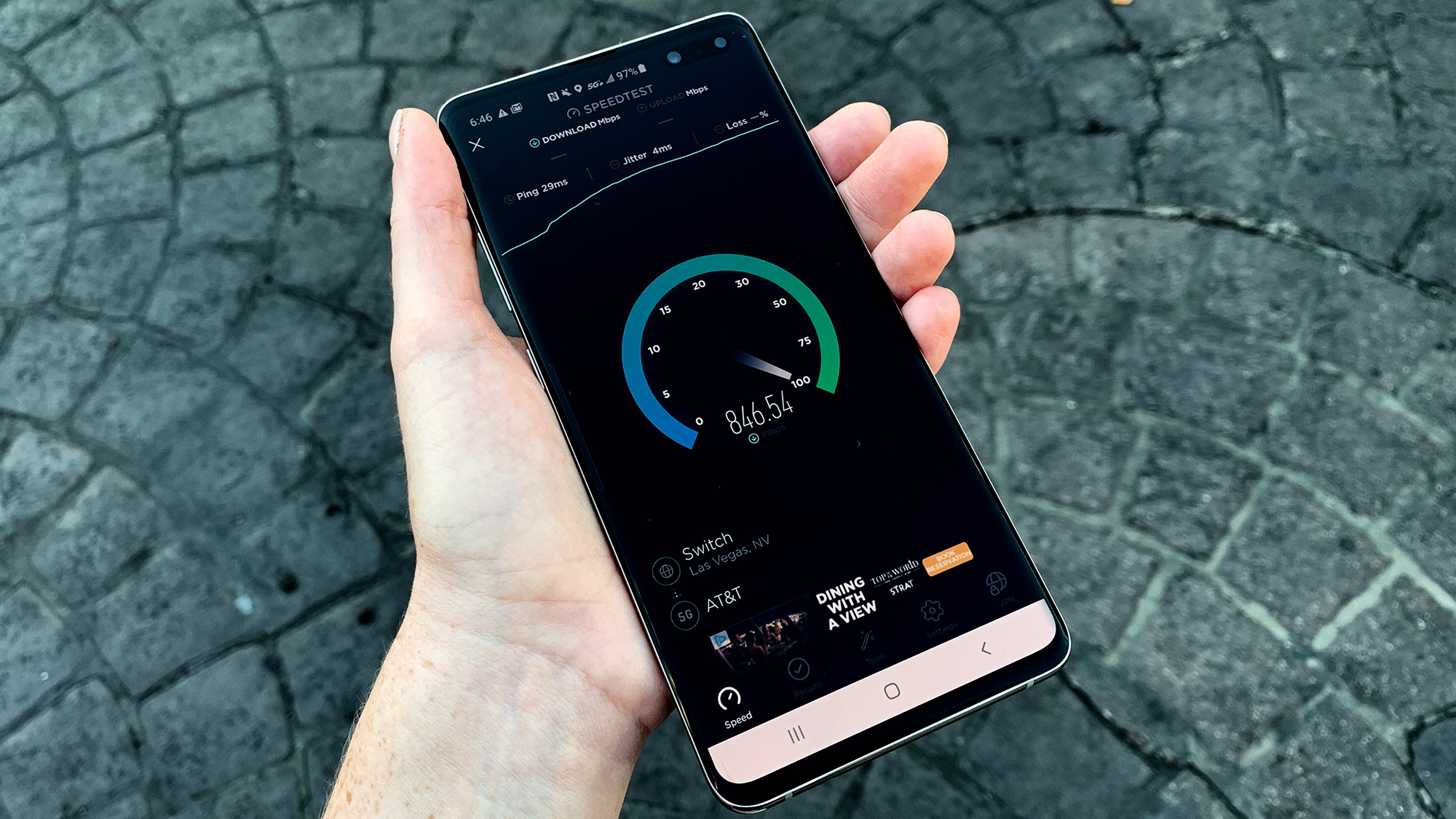
A lot more people are experiencing the differences between 5G vs. 4G in recent months. The iPhone 12 ushered in the first Apple phones to support 5G connectivity last fall, with this year's Galaxy S21 launch continuing Samsung's push into 5G. Meanwhile, devices from Google, OnePlus, TCL and Motorola have pushed the cost of 5G phones below $500.
Both Verizon and T-Mobile are running current promotions to essentially give away 5G phones, further pushing adoption of the new technology. But with 5G phones in the hands of more people, what kind of differences are they actually seeing?
- Best 5G phones
- Which is the best phone carrier?
- Speed up your connection with the top fast VPN
The truth is, only modest gains. You'll see some fast speeds with 5G, but nothing like you're going to see as the networks mature.
In our testing of 5G networks in a handful of cities across the country in the past couple years — the coronavirus pandemic has limited our ability to go out and do testing — we've yet to see the sustained gigabit speeds that the fifth generation of connectivity promises. But that will change, experts predict, as carriers continue to build out their networks. And Roland Moore-Colyer has found one compelling reason to adopt 5G.
Here’s what we expect from 5G when next-gen networks blanket the nation, and what we’ve seen from our own 5G vs. 4G comparisons combined with testing from third-party firms.
5G speed: 5G vs. 4G download speeds compared
| Row 0 - Cell 0 | Average 5G download speed | 4G |
| AT&T | 75.6 | 37.1 Mbps |
| Sprint | 70 Mbps | 32.5 Mbps |
| T-Mobile | 71 Mbps | 36.3 Mbps |
| Verizon | 67.1 Mbps | 53.3 Mbps |
4G speeds are based on the nationwide average of our last-round of LTE network speed tests. For 5G speeds, we've listed the results from Ookla's testing during the fourth quarter of 2020.
5G: Promise vs. reality
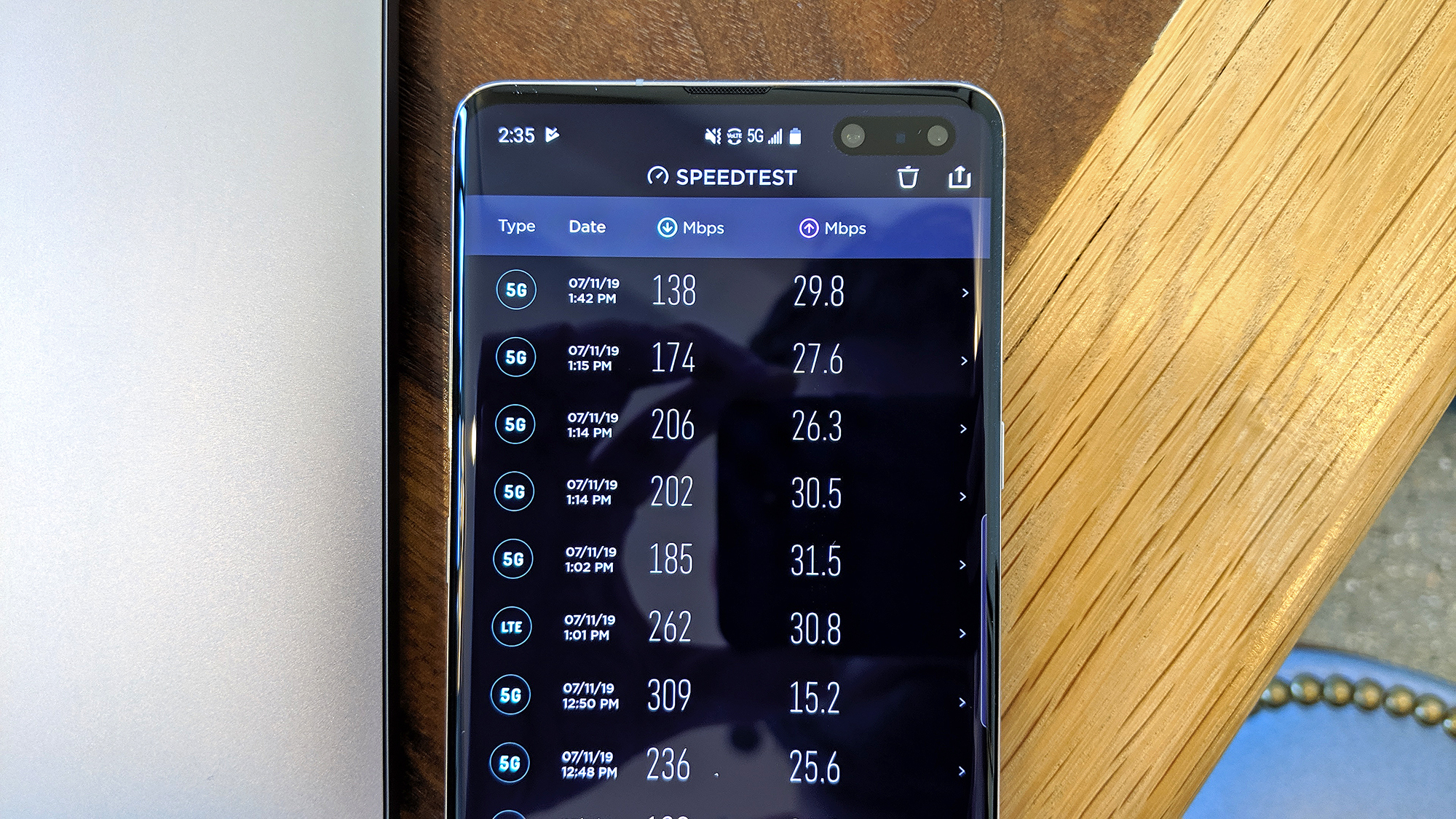
As you can see from the above table, 5G speeds aren't coming anywhere close to the 1Gbps speeds commonly associated with the faster wireless networking standard. In some cases, speeds are only modest improvements over what we've seen from LTE.
Sign up to get the BEST of Tom's Guide direct to your inbox.
Get instant access to breaking news, the hottest reviews, great deals and helpful tips.
And it's not just Ookla's test that bares that claim out. In its January 2021 report on network performance, OpenSignal found that average real world 5G speed was 58.1 Mbps by the end of the year. That was an increase from the 49.2 Mbps speed recorded six months earlier over 5G, but only modestly ahead of overall download speeds recorded by OpenSignal in a separate report.
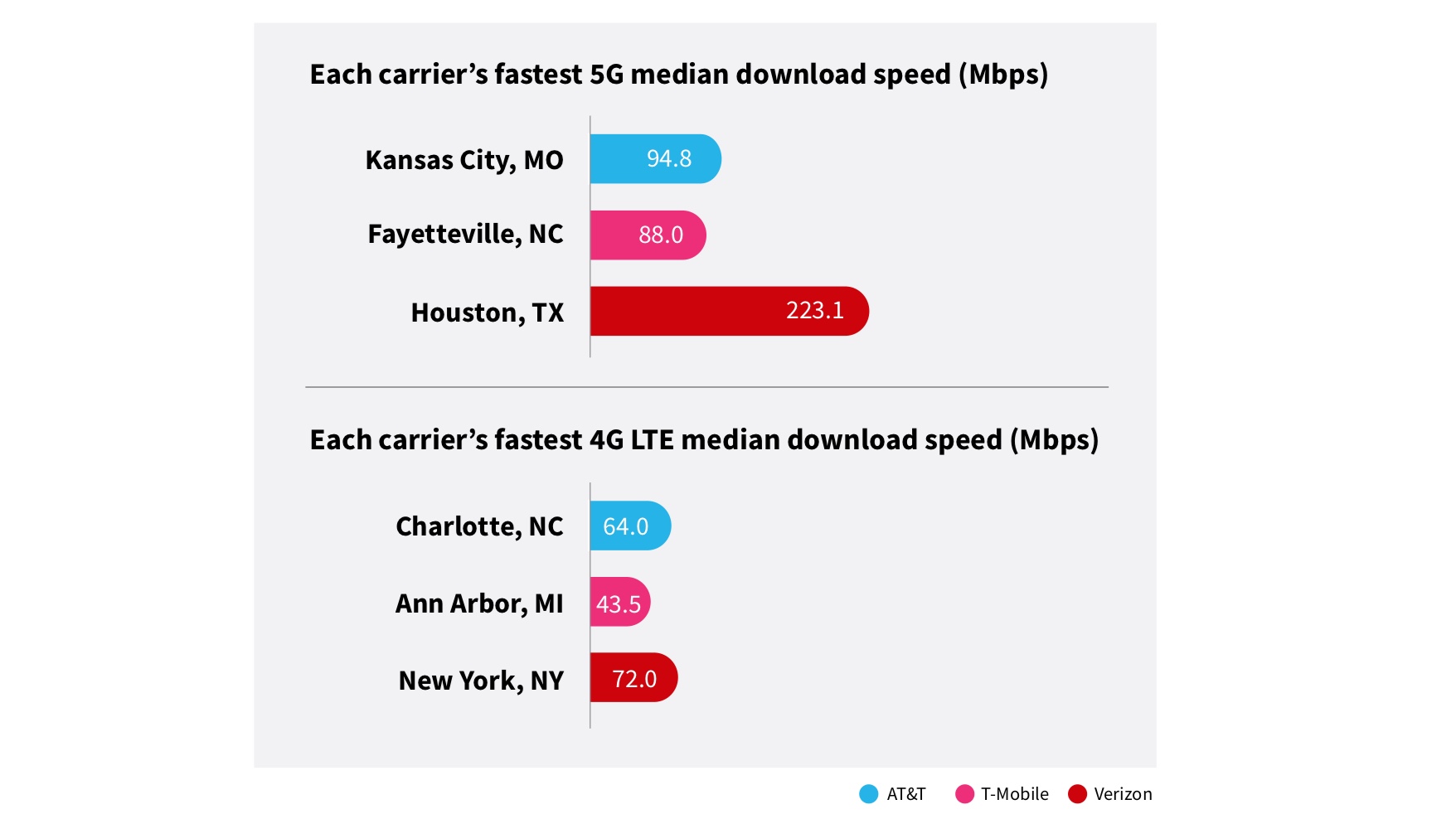
A report from testing firm Rootmetrics showing network performance at the end of 2020 gives us a look at the differences between 5G vs. 4G. The best median download speeds are much better for 5G — significantly so, in the case of Verizon.
That's because Verizon built its initial 5G network on mmWave. The technology is super fast with speeds often approaching — and even surpassing the 1 Gbps mark. That's good!
What's not so good is that mmWave signals don't carry very far, and they can't penetrate physical barriers. To enjoy high-speeds, you've got to be in sight of a mmWave module, which means being outdoors in one of the 71 cities where Verizon has deployed high-speed 5G.
Like the other carriers, Verizon has since deployed a nationwide network built on slower but more extensive parts of the wireless spectrum. As a result Verizon's 5G speeds tumbled from first to worst in Ookla's latest rankings. Big Red boasted 792 Mbps speed when Ookla measured in the third quarter of 2020; by the fourth quarter that number had tumbled to 67 Mbps.
At the same time, Ookla says Verizon's 5G time spent improved from 0.6% in the third quarter to 29.6% by the end of the year. (5G Time Spent shows the percentage of time customers with a 5G device can get a 5G signal on a compatible phone.)

Since the start of 2021, there's been some progress for each of the carriers, at least based on a May 2021 report from Rootmetrics. In that report, AT&T claimed the fastest 5G speeds, while Verizon topped the ranks for 5G reliability and T-Mobile enjoyed a lead in 5G reliability. Come back in a few months, and those results will likely shift some more.
True 5G is going to incorporate both sub6GHz and mmWave to provide both widespread coverage and high speeds. Indeed, that's what T-Mobile is shooting for with what it calls its Ultra Capacity 5G service that combines far-reaching lowband coverage with the faster midband spectrum it obtained in its merger with Sprint. As of the end of January, Ultra Capacity 5G reaches 1,000 cities and towns, and T-Mobile aims to take it nationwide by the end of 2021. Verizon, meanwhile, hopes to start implementing its C-band spectrum that will extend the reach of some of its faster speeds.
5G vs. 4G: Our test results
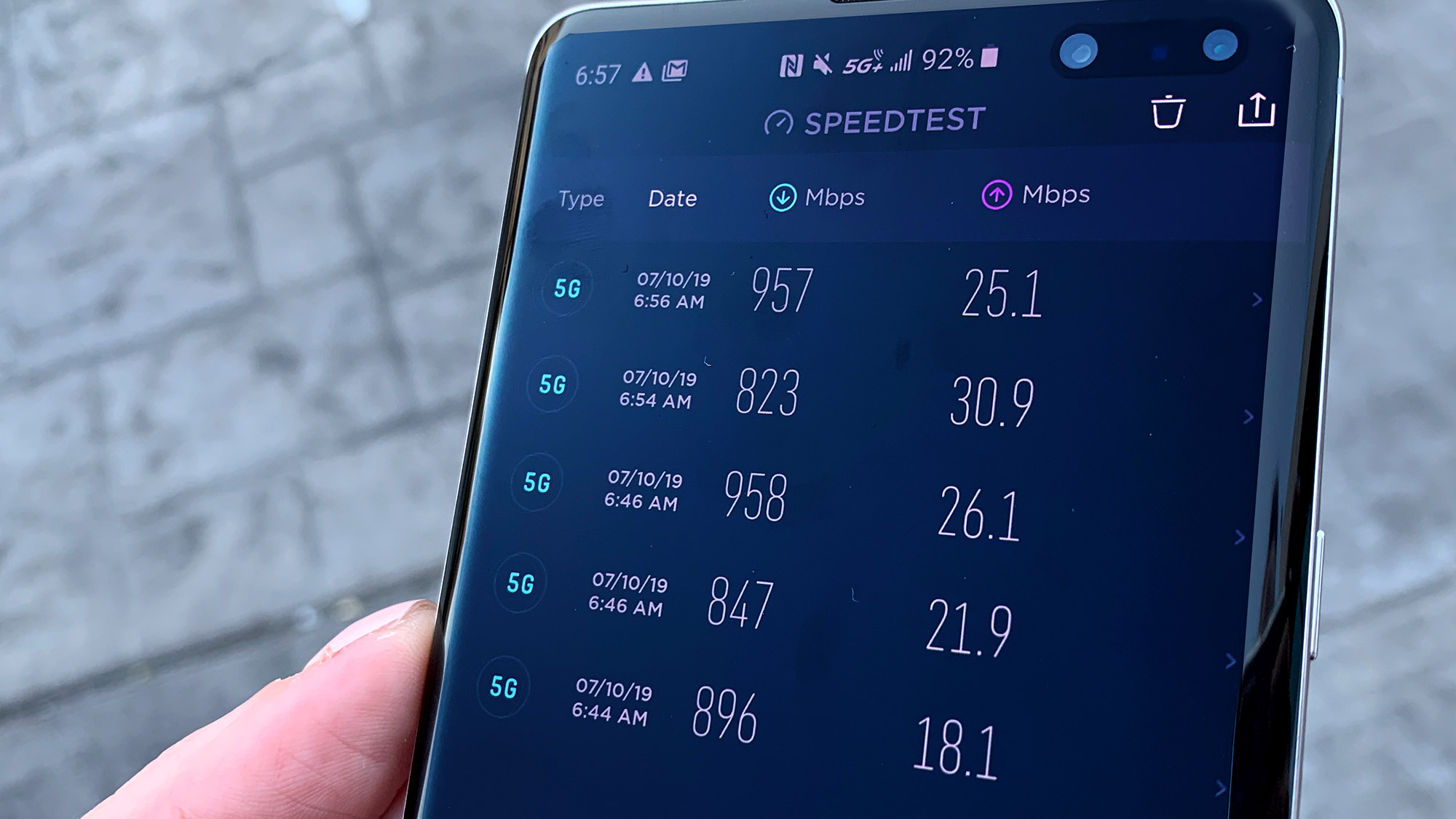
It's important to keep in mind that 5G performance is forever changing, as carriers build out their networks and improve upon existing service. But it's helpful to look back at where we've been to chart the progress carriers are making.
In our 2019 testing, Sprint’s network, which uses mid-band spectrum, proved to be slower than Verizon’s network, but more widespread and reliable. Sprint, of course, is now part of T-Mobile, which is using Sprint's spectrum to bolster the speed of its nationwide coverage. AT&T now has a nationwide 5G network, too, augmented by mmWave coverage (which AT&T calls 5G Plus) in around three dozen cities.
At its peak, we saw download speeds in excess of 1 Gbps from Verizon in Chicago, and speeds in the 900 Mbps range from AT&T's 5G Plus network in Las Vegas. T-Mobile’s mmWave 5G network in New York was more widespread than the pockets of coverage we saw in Chicago and Vegas, but only reached 600 Mbps.
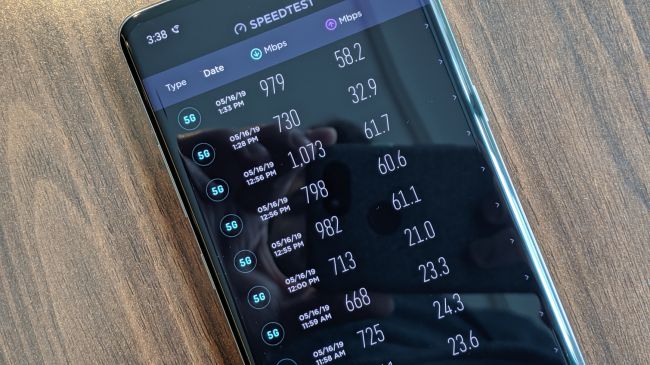
Sprint’s slower 5G network turned up top speeds ranging from 350 to 450 Mbps in Dallas, hovering under 200 Mbps for most tests, but blanketed more of the city than mmWave. In Chicago, we saw similar results from Sprint, but at least we could catch a 5G signal indoors.
As for T-Mobile's nationwide 5G network, the low-band spectrum means speeds reach between 100 to 200 Mbps at their peak, but in most cases are modest improvements over what you'd expect from 4G — at least when we ran our initial tests. The addition of Sprint spectrum is improving those results in many cities.
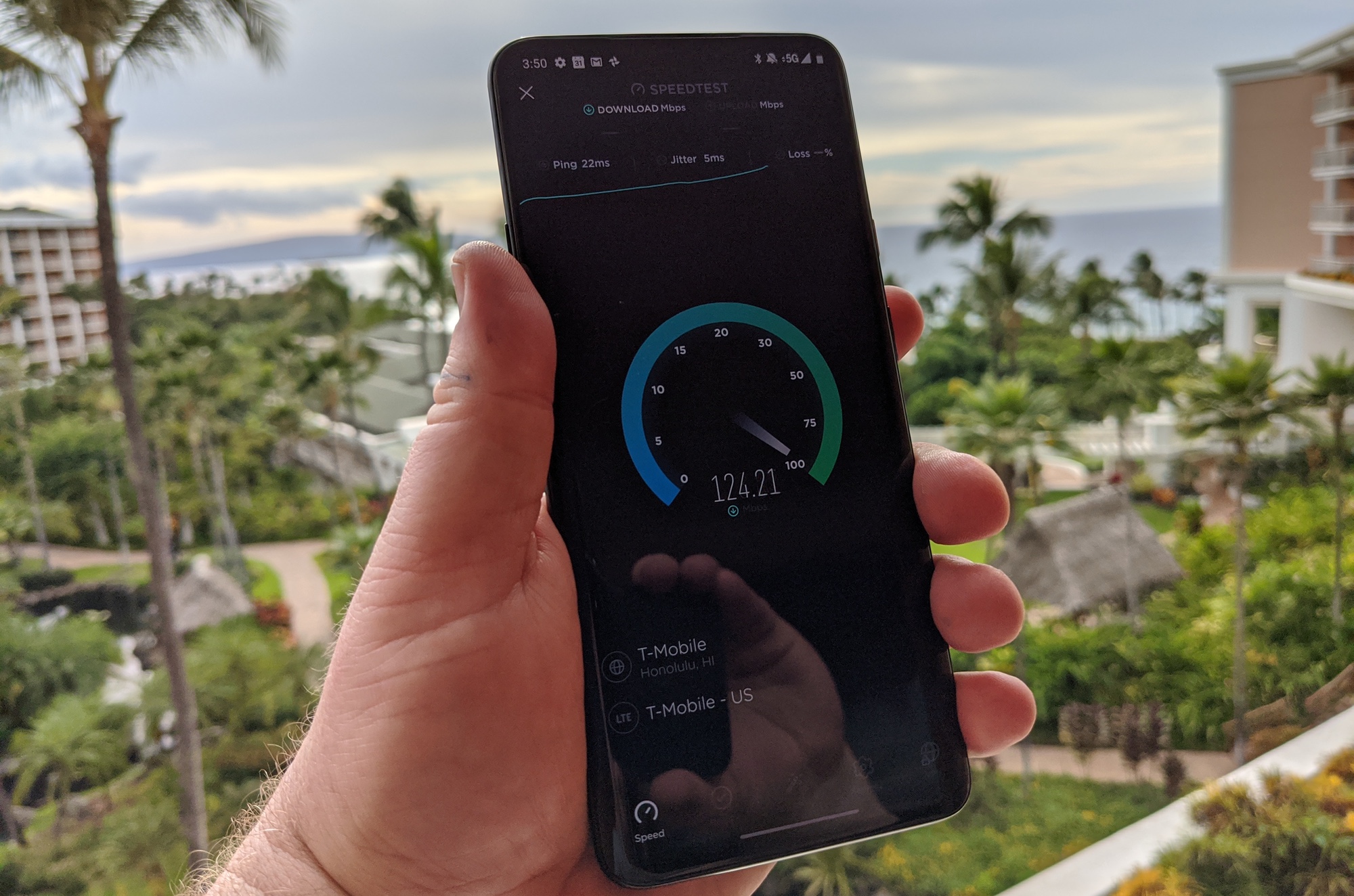
5G vs 4G: What you can do with extra speed
5G is already up to 10 times faster than 4G in some places, which is insanely cool. Theoretically, 5G devices will able to reach peaks of 10 Gbps. But what does a person actually do with all that speed?
Well, in daily life, little annoyances like forgetting to download a full-length movie before a flight will disappear. 5G will enable gigabit downloads in seconds. Even now, before 5G is fully built out, I was able to download a 1-hour, 48-minute movie in just 49 seconds over AT&T’s 5G Plus network, which hit peak speeds of 956 Mbps in our testing. Even on T-Mobile's slower low-band 5G network, we could download the 3.5-hour movie The Irishman in less than 3 minutes off Netflix.
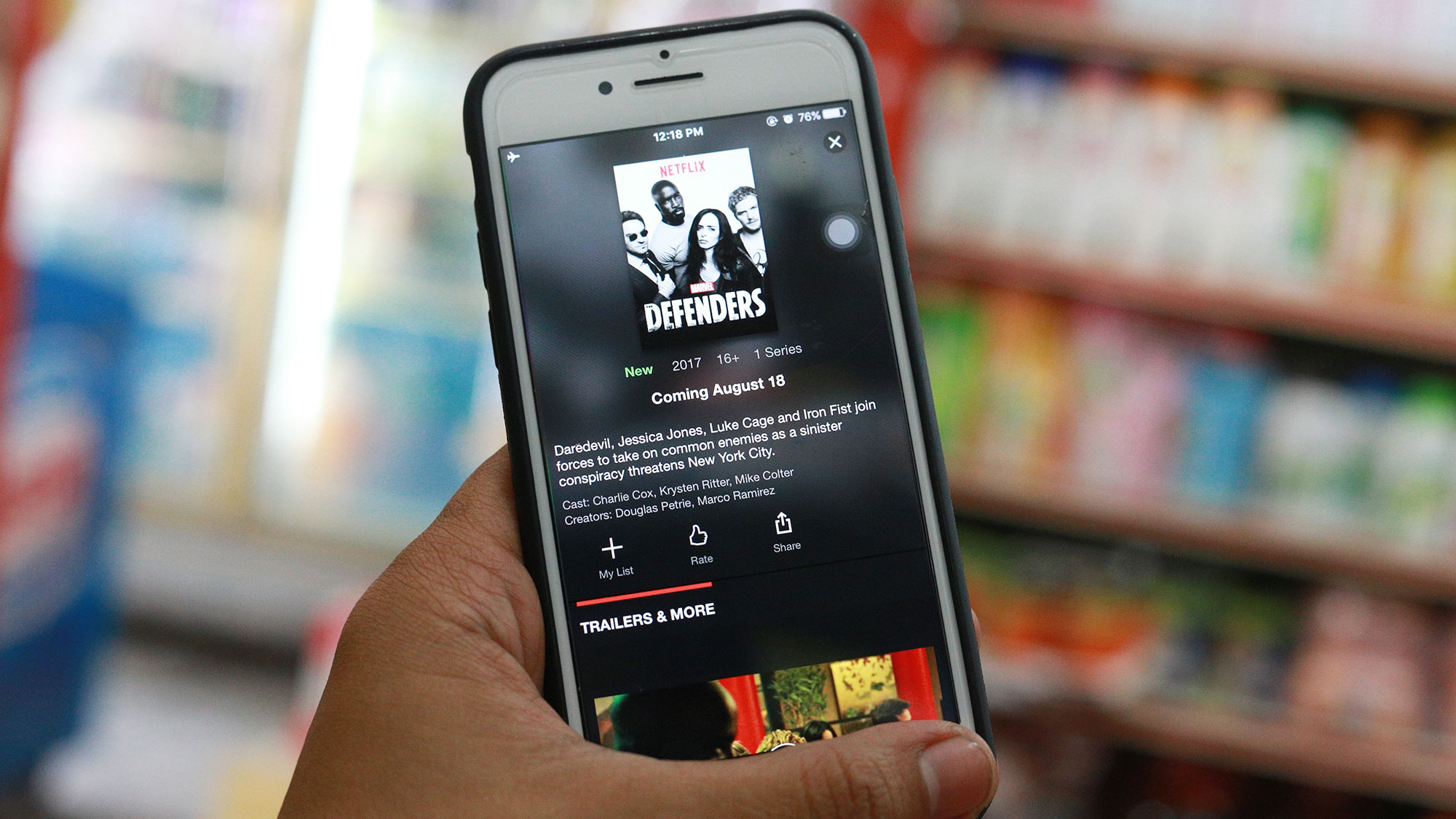
Adriane Blum, Ookla’s marketing director, told us last year that you’ll still be able to do all the “same things you did prior to 5G rolling out, but what’s going to happen is it will happen at a clip that will feel like the blink of an eye.”
It isn’t just 5G’s crazy-fast peak speeds that will improve our lives. The new generation of connectivity will also improve average speeds, because carriers are able to make use of new frequencies that were previously unused for mobile, opening up capacity.
“You’re raising the maximum speed, but you’re also raising the speed at the worst time of day in the worst location,” Ian Fogg, Opensignal’s vice president of analysis, said last year.
That means when you use your phone in congested areas, you’ll still have reliable connectivity.
But perhaps even more importantly, there are changes we don’t see coming.
“This kind of conversation has come up at the evolution of every new wave of technology,” Blum said. “Before 4G was ubiquitously available, people weren’t streaming content on their phones. There just wasn’t the bandwidth. And now that’s something people primarily do on their phones. Whether or not we imagine it, consumers find a way to use it.”
Beyond faster speeds, 5G will also deliver lower latency. We haven’t been able to put that to the test yet, but according to experts, 5G will reduce latency to less than 1 millisecond. At the end of 2019, 4G latency hovered between 42.2 and 60.5 milliseconds in tests across 40 major U.S. cities, according to Opensignal, which was still long enough to be perceptible when using augmented reality or virtual reality. The reduction in latency is expected to make AR and VR ubiquitous.
At CES 2021, Verizon CEO Hans Vestberg painted a bullish picture of 5G, noting that the faster speeds and lower latency could help with everything from distance learning to package delivery by drones. The technology's expected to enhance experiences for live sports and concerts, too — once we're allowed to return to those venues, of course.
5G vs 4G price: How much more does faster speed cost?
The good news is that 5G coverage won't cost you any more than LTE — so long as you're willing to sign up for an unlimited data plan.
At Verizon, you'll get 5G coverage with the carrier's Play More ($80/month), Do More ($80/month) and Get More plans ($90/month). The cheapest unlimited option — the $70-a-month Start Unlimited plan — requires a $10-a-month add-on for 5G.
AT&T used to require subscribers to sign up for an Unlimited Extra ($75/month) or Unlimited Elite ($85/month) plan. But with the launch of nationwide 5G coverage last year, Unlimited Starter subscribers ($65/month) have 5G coverage, too, and AT&T has even brought 5G to legacy unlimited plans at no extra cost.
T-Mobile includes 5G coverage with its unlimited data plans, including Essentials ($60/month) and Magenta ($70). The Magenta Max plan ($85) goes even further by letting you consume limitless data without having to worry about the carrier slowing your speeds. Even T-Mobile's $15 T-Mobile Connect prepaid plan has 5G coverage, though with only 2GB of data, that's not a lot of data to play around with.
4G: Faster than ever
The good news: Even if it takes a while for 5G networks to realize their full potential, wireless carriers have been simultaneously working on their 4G LTE networks. 4G is now more widespread, reliable and faster than ever. That’s crucial, because unlike past generations of network connectivity, 4G and 5G will coexist.
Milan Milanovic, Ookla’s resident network expert, recalled seeing peak download speeds top out at 50 Mbps in some tests back in 2010, when 4G was in its infancy. Now LTE devices can hit hundreds of megabits per second.
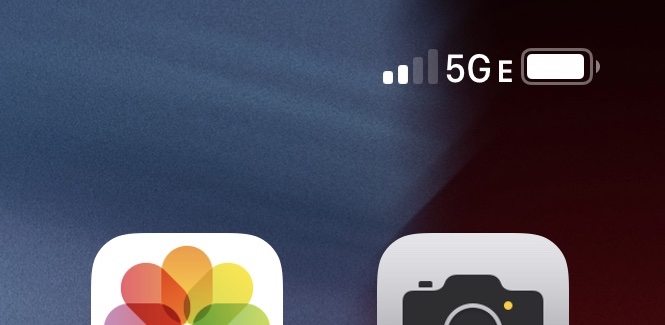
Every carrier has worked to boost LTE speeds and improve coverage in recent years to make the transition to 5G smoother. But only one carrier rolled out a new label to describe its effort: AT&T. And despite the controversy over its 5G E logo, which led some subscribers to think they have 5G when they don’t, AT&T still has LTE performance that generally ranks amongst the fastest networks, depending on who you ask.
“AT&T is adding more lanes to the highway and adding more frequency bands,” Milanovic said when we spoke to him last year. “If you have a [5G E] capable device, the network is ready to serve you four or five channels at the same time, which means faster speeds and completing tasks quicker.”
Other operators are doing the same thing, Milanovic noted, but they’re not sticking 5G labels on their advanced LTE networks. Verizon’s network, which topped our list of fastest wireless networks in 2018, isn’t quite as fast as AT&T and T-Mobile anymore, Ookla says, but it is more reliable in more areas than its rivals are. In other words, you’re more likely to be shunted to 3G on AT&T than you are on Verizon.
Meanwhile, Verizon is using CRBS spectrum to boost its 4G speeds in some areas. That's significant for two reasons — in some cases, testers have found that this new Verizon LTE is actually faster than the carrier's nationwide 5G. (The mmWave-based Ultra Wideband 5G network remains Verizon's speed king.) CRBS spectrum also paves the way for C-band spectrum, which Verizon intends to use to stretch how far its faster 5G signals can reach.
5G vs. 4G outlook
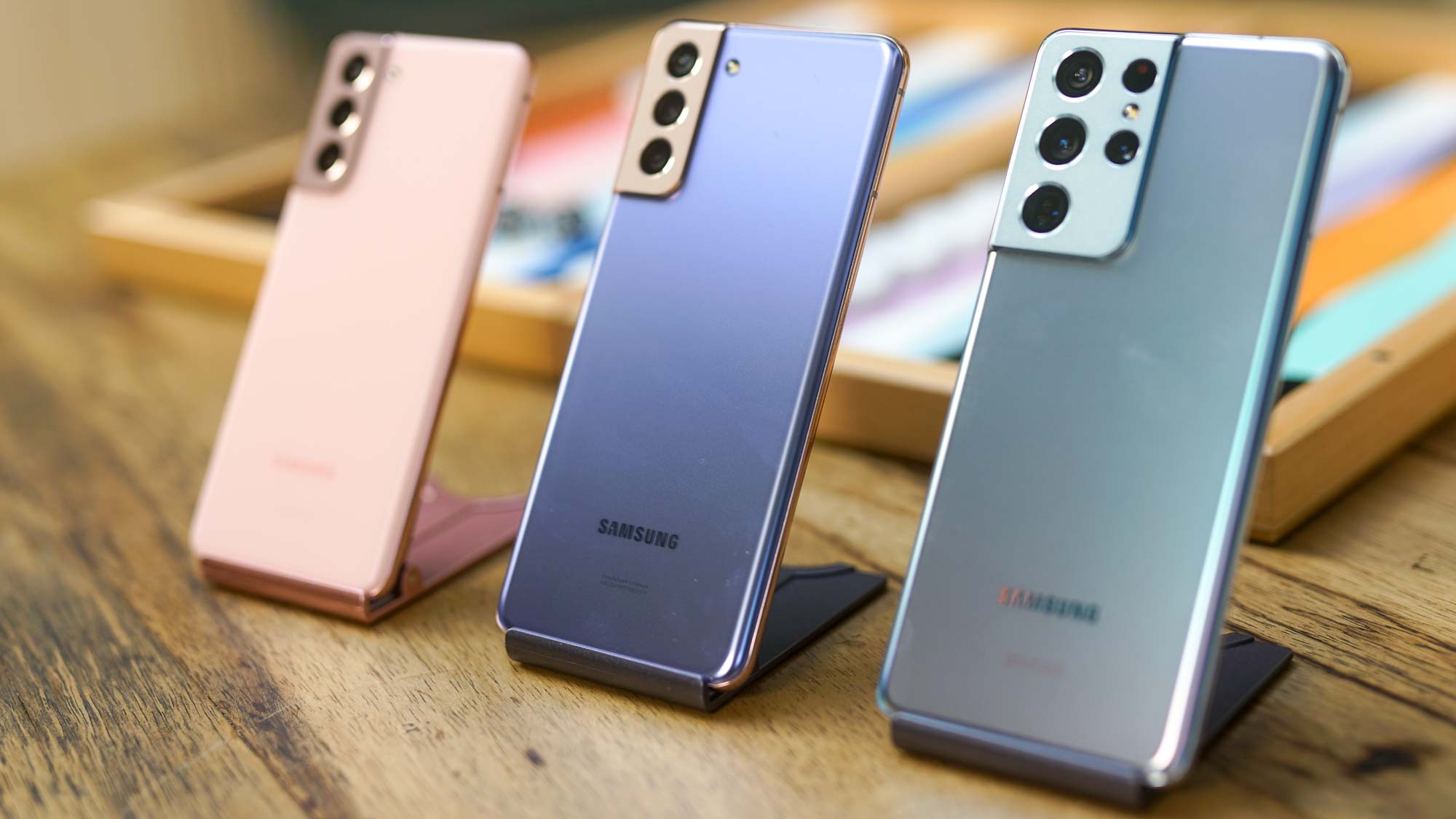
Just as 4G changed our lives with ride-hailing and video-streaming, 5G’s speeds will enable new ways of doing things.
“We’re in a tremendous period of change, and it’s going to happen very rapidly,” Ookla’s Blum told us when 5G networks were first emerging. “There’s been a lot of talk about 5G, and it’s been very speculative, deep in a lab somewhere being developed and tested. This is the first year we can actually say 5G is here.
“It’s not here for everyone, and it will take time to get to everyone,” Blum added. “But it is here. I think quarter to quarter for the next couple of years, it’s going to be mind-boggling amounts of growth.”
Tom's Guide upgrades your life by helping you decide what products to buy, finding the best deals and showing you how to get the most out of them and solving problems as they arise. Tom's Guide is here to help you accomplish your goals, find great products without the hassle, get the best deals, discover things others don’t want you to know and save time when problems arise. Visit the About Tom's Guide page for more information and to find out how we test products.
-
soplastered2 Is network speed the same as download speed? I'm really shocked by how low your numbers are. My phone's network speed is 433Mbps. I read this article because my old router had 2 WIFI accounts. One for 2.4g the other for 5G. I recently "upgraded" my system but the new router only has one account and does not show 5G. I read this article because I want to know if I did in fact still have a 5G network. Now I'm more confused however because my numbers are so outrageously different from what you show here. I've attached a screenshot so you might be able to see where I'm making my mistake because for what I'm paying for my services there's no way I can have speeds that much faster than the top of the line 5G networks.file:///O:/Desktop/New%20folder/Screenshot_20210313-025251_Settings.jpgReply -
Wolfshadw You need to upload your images to a third party hosting site like imgur.comReply
Tom's Guide does not host images.
-Wolf sends -
QCS Replysoplastered2 said:Is network speed the same as download speed? I'm really shocked by how low your numbers are. My phone's network speed is 433Mbps. I read this article because my old router had 2 WIFI accounts. One for 2.4g the other for 5G. I recently "upgraded" my system but the new router only has one account and does not show 5G. I read this article because I want to know if I did in fact still have a 5G network. Now I'm more confused however because my numbers are so outrageously different from what you show here. I've attached a screenshot so you might be able to see where I'm making my mistake because for what I'm paying for my services there's no way I can have speeds that much faster than the top of the line 5G networks.file:///O:/Desktop/New%20folder/Screenshot_20210313-025251_Settings.jpg
I had to reply to this, because I think education and learning new things is invaluable.
Network and download speeds are 2 different things, but so is 5G and 5Ghz. In this article, they are talking about CELL PHONE networks, while you are referring to WiFi frequencies. 2.4GHz and 5GHz are WiFi fequencies. 5GHz provides faster speeds than 2.4GHz, but at a sacrifice of range. You also don't pay any subscription fees with 2.4GHZ or 5GHz - they are built into your WiFi router and devices (some have both, and some only support 2.4GHz - although by now I think most devices support both).
3G, 4G, and 5G are all cell phone network technologies, with 5G being the latest, and presumably fastest. While connected to your WiFi network, you make no use of your cell phone network's data plan, so in that case, 4G or 5G do not apply to you. They would only apply to you while not on any WiFi network, and using your cell phone's data plan. And as for not getting 5G because you pay less for your plan is not necessarily accurate, as here, in Canada, Rogers charges the same whether you have a 4G or 5G device. They claim that they "include 5G" in their pricing - supposed to make you feel special I guess :)
Now, regarding network speed vs download speed. The 2 use different measurements. For example, on a 300Mbps (Megabits per second) connection, you could expect to see downloads speeds of up to 37.5MBps (Megabytes per second). I found this page that talks about the difference in internet speed or bandwidth, and download speed: https://www.jetspot.in/what-is-the-difference-between-internet-speed-download-speed/#:~:text=Connection speed (or Internet Bandwidth,connection provided by your ISP.&text=On the other hand, when,is interpreted as Download Speed.
Hopefully that helps someone learn something new :)

